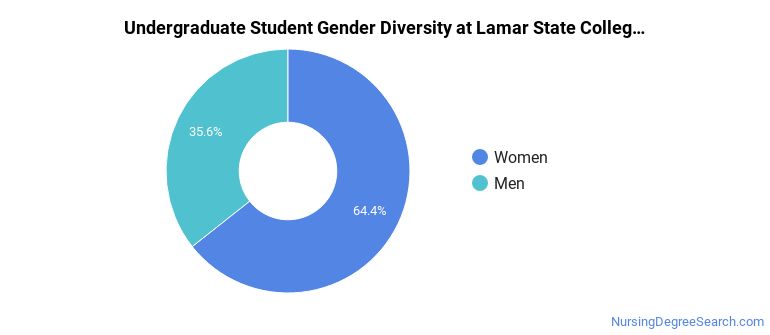Lamar State College - Port Arthur Nursing Programs
Lamar State College - Port Arthur is a public institution situated in Port Arthur, Texas. The location of the school is great for students who enjoy the amenities of city life.
Where Is Lamar State College - Port Arthur?

Contact details for Lamar State College - Port Arthur are given below.
| Contact Details | |
|---|---|
| Address: | 1500 Proctor St, Port Arthur, TX 77640 |
| Phone: | 409-984-6342 |
| Website: | www.lamarpa.edu |
How Do I Get Into Lamar State College - Port Arthur?
You can apply to Lamar State College - Port Arthur online at: https://www.applytexas.org/
Can I Afford Lamar State College - Port Arthur?
Student Loan Debt
It's not uncommon for college students to take out loans to pay for school. In fact, almost 66% of students nationwide depend at least partially on loans. At Lamar State College - Port Arthur, approximately 16% of students took out student loans averaging $5,634 a year. That adds up to $22,536 over four years for those students.
Lamar State College - Port Arthur Undergraduate Student Diversity

Gender Diversity
Of the 850 full-time undergraduates at Lamar State College - Port Arthur, 36% are male and 64% are female.

Racial-Ethnic Diversity
The racial-ethnic breakdown of Lamar State College - Port Arthur students is as follows.

| Race/Ethnicity | Number of Grads |
|---|---|
| Asian | 34 |
| Black or African American | 289 |
| Hispanic or Latino | 248 |
| White | 266 |
| International Students | 0 |
| Other Races/Ethnicities | 13 |
Lamar State College - Port Arthur Nursing Concentrations
The table below shows the number of awards for each concentration.
| Major | Basic Certificate | Associate’s | Undergraduate Certificate | TOTAL |
|---|---|---|---|---|
| Licensed Practical/Vocational Nurse Training | 0 | 0 | 77 | 77 |
| Registered Nursing | 0 | 46 | 0 | 46 |
| Nursing Assistant/Aide and Patient Care Assistant/Aide | 5 | 0 | 0 | 5 |
| TOTAL | 5 | 46 | 77 | 128 |
References
*The racial-ethnic minorities count is calculated by taking the total number of students and subtracting white students, international students, and students whose race/ethnicity was unknown. This number is then divided by the total number of students at the school to obtain the racial-ethnic minorities percentage.
More about our data sources and methodologies.
